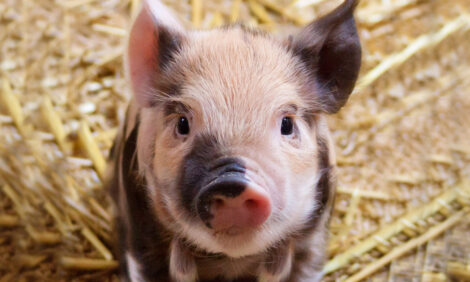



Pork Outlook Report - October 2003
By U.S.D.A., Economic Research Service - This article is an extract from the September 2003: Livestock, Dairy and Poultry Outlook Report, highlighting Global Pork Industry data. The report indicates that 2004 hog imports are to dip slightly.
Pork Production Record High
Despite reductions in the U.S breeding herd reported in the Quarterly Hogs and Pigs report (NASS, USDA), the U.S. pork sector continues to produce record quantities of pork products. Current expectations are for record production of 19.7 billions pounds this year, and 19.8 billion pounds in 2004. Pork production has been sustained by record high imports of hogs from Canada, and higher dressed weights. For the year, hog prices are likely to average almost 14 percent higher than in 2002, at nearly $40 per cwt. Prices next year will likely average about the same as in 2003.
Quarterly Hogs and Pigs Report Tracks with Expectations
|
Retail Pork Price
Percent change from previous month 
|
U.S. hog imports and heavier dressed weights will likely be key factors next year as well. If U.S. producers’ stated breeding intentions are realized in the first quarter of 2004, and further farrowings and litter rates increase modestly, the pig crop will about equal that of 2003. However, 2004 slaughter and pork production are expected to increase slightly — by less than 1 percent — largely because the United States is expected to import 6.9 million Canadian hogs, and dressed weights are expected to increase by about 1 pound.
Relatively strong demand for pork products is expected to support fourth-quarter 2003 prices for 51-52 percent lean hogs (live equivalent) in the high $30 per hundredweight range, despite expectations of seasonally large weekly slaughters of 2 million head or more. Hog prices are very likely being supported by record high prices for U.S. cattle and beef. Indeed, with weekly slaughters since mid-September averaging 2 million head, hog prices have averaged about $42 per hundredweight. For the year, hog prices are likely to average almost 14 percent higher than in 2002, near $40 per cwt. Prices next year are expected to average about the same as in 2003.
Retail pork prices in August increased to $2.71 per pound, almost 2 percent over July, on the strength of consumers’ looking to pork products for some relief from record high beef prices. The seasonally high fourth-quarter slaughter is expected to hold retail pork prices in the mid-$2.60 range, which is almost 1 percent higher than a year ago and in the first half of 2003. Retail pork prices in 2004 will likely average less than 1 percent higher than this year.
United States to Import More than 7 Million Canadian Hogs in 2003
|
Weekly Hog Slaughter
Percent change from last year 
|
Finally, there is some evidence of recent weakness in Canadian pork consumption in favor of beef, in response toadvertising campaigns supporting the Canadian beef industry. The bottom line for the U.S. pork industry is that weak Canadian slaughter margins tend to reduce prices that Canadian processors bid for hogs, which in turn creates incentives for Canadian producers to market hogs in the United States.
The larger than expected slaughter hog imports in the third quarter masked a strong gain in feeder pig imports. Third-quarter feeder pig imports increased 61 percent above a year ago, reflecting a Canadian pig crop 4 percent larger than in 2002, as well as very strong demand by U.S. finishing operations in Corn Belt States.
2004 Hog Imports to Dip Slightly Compared With Record High Imports This Year
Next year, total U.S. hog imports are expected to decline slightly to 6.9 million head, a reduction of about 2.5 percent from 2003. Expectations for fewer slaughter hog imports, smaller growth of the
Canadian pig crop, and a slightly larger Canadian slaughter together point to smaller U.S. hog
imports next year.
The proportion of feeder pigs to slaughter hogs is expected to return to past trends next year. About 70 percent of U.S. hog imports next year will likely be feeder animals, with the remaining 30 percent largely comprised of slaughter hogs. By comparison, this year the feeder pigs to slaughter
hog ratio is expected to average about 68 percent feeder pigs and 32 percent slaughter animals.
Links
For more information view the full Livestock, Dairy and Poultry Outlook - October 2003 (pdf)Source: Livestock, Dairy and Poultry Outlook - U.S. Department of Agriculture, Economic Research Service - October 2003






